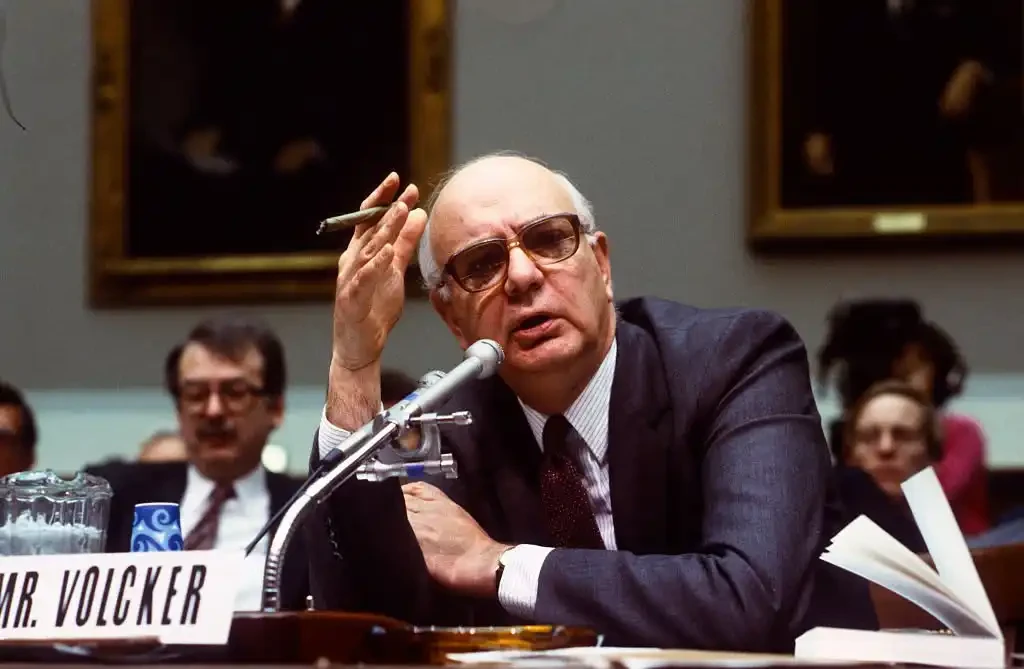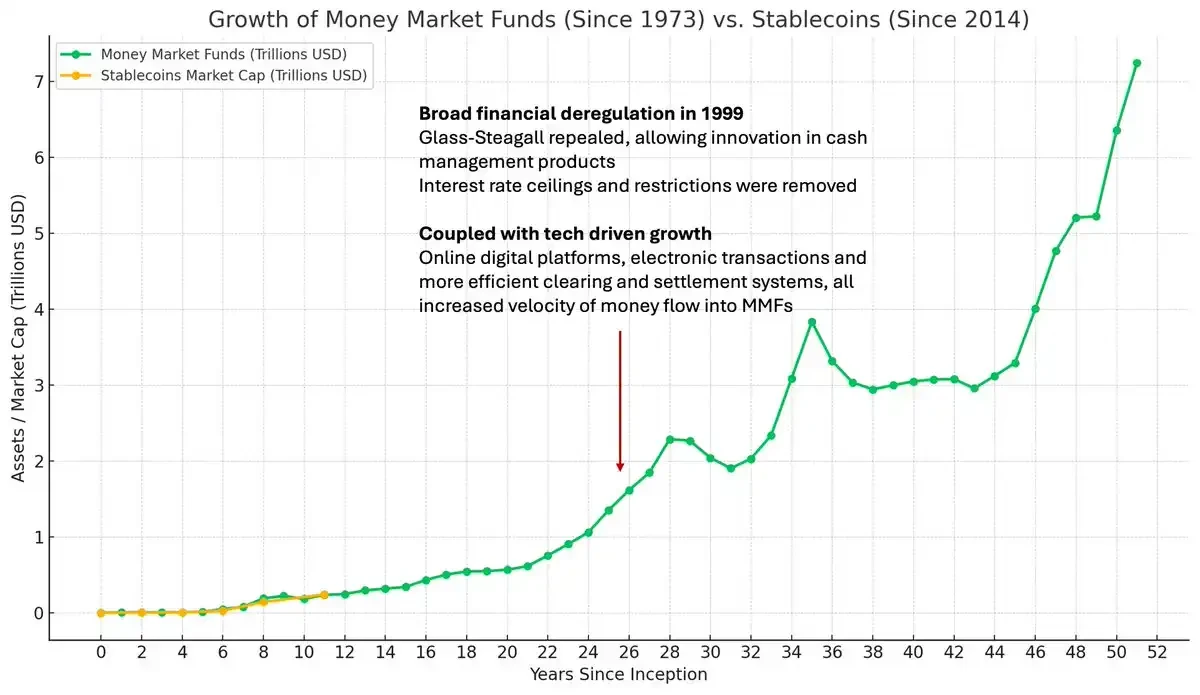Original Title: Stablecoins and the parallels with Money Market Funds
Original Authors: @shawnwlim, @artichokecap Founders
Original Translation: zhouzhou, BlockBeats
Editor's Note: The regulatory battle over stablecoins is reminiscent of the challenges faced by money market funds (MMFs) half a century ago. MMFs were initially designed to provide cash management for businesses but faced criticism for lacking deposit insurance and being susceptible to runs, which affected bank stability and monetary policy. Despite this, MMF assets have now surpassed $7.2 trillion. The 2008 financial crisis led to the collapse of the Reserve Fund, and in 2023, the SEC is still pushing for MMF regulatory reforms. The history of MMFs suggests that stablecoins may face similar regulatory challenges but could ultimately become an important part of the financial system.
The following is the original content (reorganized for readability):
Stablecoins are exciting, and the upcoming stablecoin legislation in the U.S. represents a once-in-a-lifetime opportunity to upgrade the existing financial system. Those who study financial history will see parallels with the invention and development of money market funds about half a century ago.
Money market funds were invented in the 1970s as a cash management solution primarily for businesses. At that time, U.S. banks were prohibited from paying interest on balances in checking accounts, and businesses typically could not maintain savings accounts. If a business wanted to earn interest on idle cash, it had to purchase U.S. Treasury securities, enter into repurchase agreements, invest in commercial paper, or buy negotiable certificates of deposit. Managing cash was a cumbersome process that required significant operations.
The structure of money market funds was designed to maintain a stable share value, fixed at $1 per share. Reserve Fund, Inc. was the first money market fund, launched in 1971 as "a convenient alternative for directly investing temporary cash balances," which were typically invested in money market instruments such as Treasury bills, commercial paper, banker's acceptances, or certificates of deposit, with initial assets of $1 million.
Other investment giants quickly followed: Dreyfus (now BNYglobal), Fidelity, Vanguard Group. In the 1980s, nearly half of Vanguard's legendary mutual fund business growth was attributed to its money market funds.

Paul Volcker, during his tenure as Chairman of the Federal Reserve (1979 to 1987), was a harsh critic of money market funds (MMFs). He continued to criticize money market funds even in 2011.
Today, many criticisms raised by policymakers against stablecoins are similar to those directed at money market funds half a century ago:
Systemic risk and banking safety concerns: Money market funds lack deposit insurance and a lender of last resort mechanism, unlike insured banks. Because of this, money market funds are prone to rapid runs, which can exacerbate financial instability and trigger contagion. There are also concerns that deposits flowing from insured banks to money market funds could weaken the banking sector, as banks lose their low-cost and stable deposit base.
Unfair regulatory arbitrage: Money market funds provide bank-like services, maintaining a stable $1 share value, but without strict regulatory scrutiny or capital requirements.
Undermining the transmission mechanism of monetary policy: Money market funds may weaken the Federal Reserve's monetary policy tools, as traditional monetary policy measures like bank reserve requirements become less effective when funds flow out of banks into money market funds.
Today, financial assets in money market funds exceed $7.2 trillion. For reference, M2 (which primarily excludes money market fund assets) is $21.7 trillion.
The rapid growth of money market fund assets in the late 1990s was a result of financial deregulation (the Gramm-Leach-Bliley Act repealed the Glass-Steagall Act, spurring a wave of financial innovation), while the internet boom facilitated better electronic and online trading systems, increasing the speed of funds flowing into money market funds.

Do you see a pattern? (I want to point out that even half a century later, the regulatory struggle over money market funds is not over. The SEC passed money market fund reforms in 2023, which include raising minimum liquidity requirements and removing restrictions on fund managers regarding investors' redemption rights.)
Unfortunately, the Reserve Fund came to an end after the 2008 financial crisis. It held some debt securities from Lehman Brothers, which were written down to zero, leading to the fund's decoupling event and massive redemptions.
免责声明:本文章仅代表作者个人观点,不代表本平台的立场和观点。本文章仅供信息分享,不构成对任何人的任何投资建议。用户与作者之间的任何争议,与本平台无关。如网页中刊载的文章或图片涉及侵权,请提供相关的权利证明和身份证明发送邮件到support@aicoin.com,本平台相关工作人员将会进行核查。




